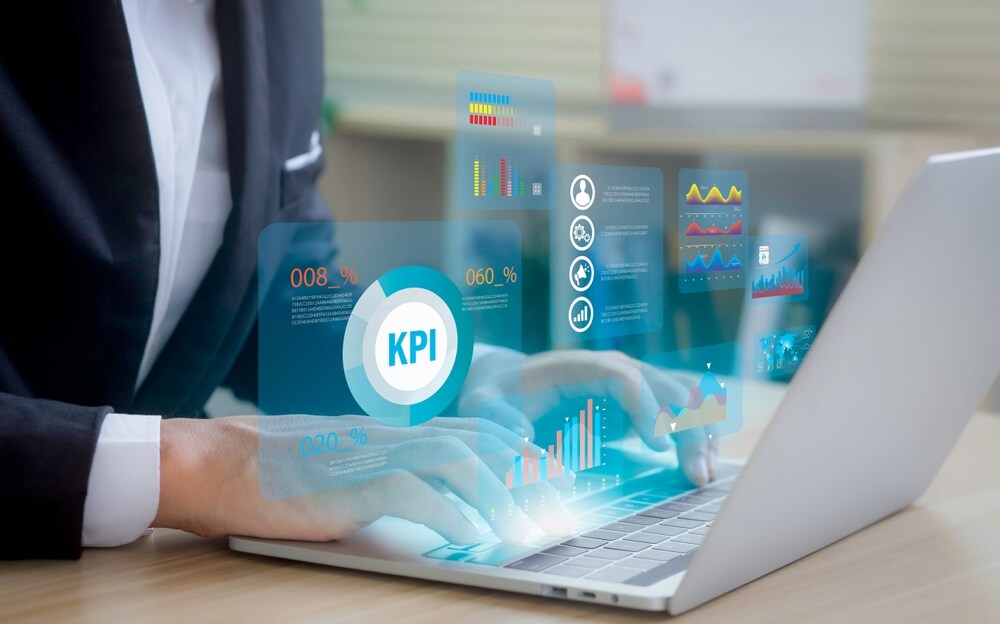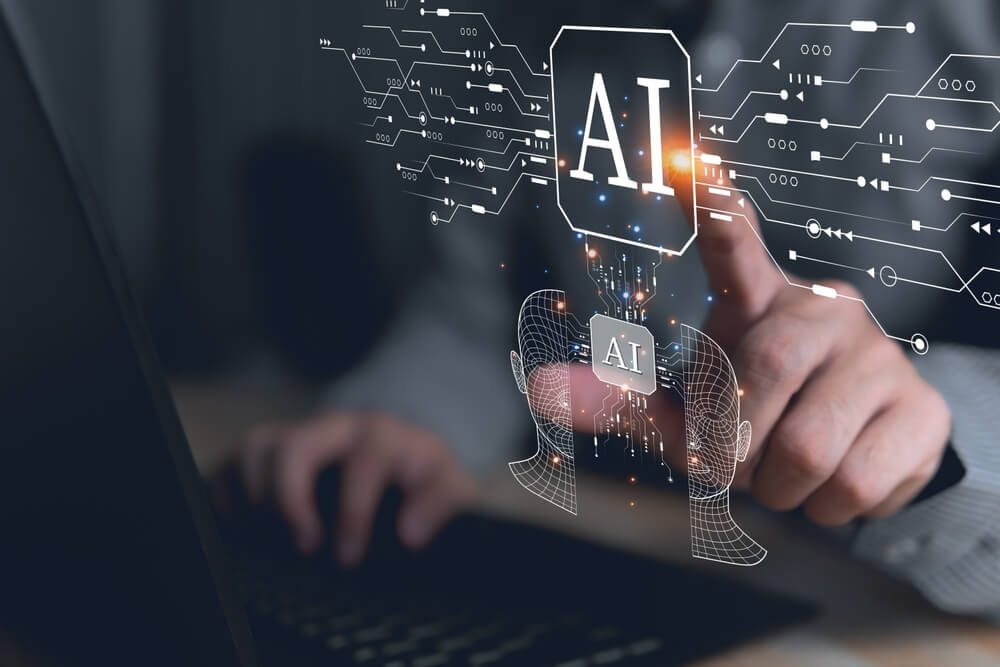
How Is AI Changing B2B Branding Strategy? +3 Tips To Try Now
Artificial intelligence (AI) revolutionizes how businesses approach B2B branding. With its capability to do in-depth data analysis, pattern recognition, and predictive modeling, AI enables you to deliver more impactful branding strategies.
This article discusses the influence of AI in branding with the following topics:
- Understanding the role of AI in branding
- How AI delivers personalized customer experiences
- Exploring opportunities for AI integration
- Identifying key performance indicators (KPIs) of AI-driven branding
- Three tips for implementing AI in branding
Continue reading to find out more. Let’s go!
Tired of investing in Search Engine Optimization without getting any results? See how Digital Authority Partners turns that around!
Understanding AI’s Role in Branding
The flexibility of AI allows for many different uses in branding strategies. From enhancing search engine optimization to improving the quality of customer interactions, the technology empowers you to take your B2B practices a step further.
AI performs the following business tasks:
- Predictive analytics: AI algorithms analyze large datasets to predict future trends, customer behavior, and market shifts. This enables you to make informed decisions about inventory management, pricing strategies, and resource allocation.
- Sales and marketing: AI-powered tools assist in lead generation, customer segmentation, and personalized marketing campaigns. Natural language processing (NLP) algorithms analyze customer inquiries and provide automated responses, improving customer service efficiency.
- Supply-chain management: AI optimizes supply-chain operations by forecasting demand and streamlining logistics. Machine learning algorithms examine historical data to improve inventory management and procurement processes.
- Customer relationship management (CRM): AI enhances the purpose of CRM platforms by providing insights into customer behavior. This helps you tailor your offerings and communication strategies to meet customer needs and foster long-term relationships.
- Product development and innovation: AI technologies aid in product design through machine learning and computer vision. Virtual assistants and chatbots also gather feedback from customers and employees to drive continuous improvement and innovation.
- Workflow automation: The technology automates repetitive tasks and workflows, reducing manual effort and increasing operational efficiency. This includes streamlining document processing, invoice management, and contract negotiation.
- Human resources: AI assists in recruitment and talent management by analyzing resumes, assessing candidates’ skills, and providing personalized training recommendations.
Overall, AI in the B2B context promotes efficiency through data-driven insights and automation tools. When you optimize business processes, you drive outcomes such as higher revenue, lower costs, longer customer retention, and improved productivity.
How AI Delivers Personalized Customer Experiences

AI shapes modern marketing with more personalized B2B customer experiences. Here is how this happens:
- AI gathers data from various sources, such as customer interactions, purchase history, browsing behavior, and demographics. It then analyzes the information to understand individual customer preferences and needs.
- It segments B2B customers into different groups based on similarities in their characteristics and behaviors. This segmentation helps in providing personalized experiences.
- It uses customer data to recommend personalized content, such as product recommendations and relevant articles.
- AI-driven pricing algorithms study market conditions, customer behavior, and other factors to customize pricing and discounts. This maximizes revenue while providing value to B2B customers.
- AI-powered chatbots provide personalized support and assistance in real time. They answer questions, give product information, and even handle routine tasks, enhancing the customer experience.
- AI automates and manages targeted marketing campaigns across various marketing channels, such as email and social media.
AI personalization improves sales and marketing effectiveness. Tailoring strategies to your B2B audience increases customer satisfaction and profits.
Exploring Opportunities for AI Integration
Properly integrating AI into your branding strategies offers numerous benefits, from enhancing B2B customer experience to improving operational efficiency. However, not everything can benefit from AI. Gauge your opportunities before diving into AI.
Here is a step-by-step guide to follow:
- Determine your branding goals, whether increasing brand awareness, improving customer loyalty, or boosting lead generation.
- Use AI-powered analytics tools to gain insights into your target audience’s behavior, preferences, and pain points. This data directs your branding strategies and helps you effectively personalize your messaging.
- Maximize generative AI tools to create high-quality, relevant content at scale. It can improve your brand voice or create consistent blueprints for a campaign.
- Monitor brand mentions and visual content with AI-powered image recognition and analysis platforms. This enables you to maintain brand consistency, identify potential brand risks, and capitalize on opportunities for engagement.
- Track the performance of your branding initiatives with automated analytics platforms. Refine your strategies based on the gathered insights.
Following these steps effectively integrates the technology into your B2B branding efforts.
Identifying Key Performance Indicators (KPIs) of AI-Driven Branding

The ideal key performance indicators (KPIs) to evaluate AI integration depend on your B2B goals. However, knowing the correct KPIs to track allows you to accurately gauge the success of your AI-assisted branding efforts.
Most B2B companies monitor the following KPIs when using AI:
1. Brand Awareness Metrics
- Website traffic measures the number of visitors to your website through organic search, referral traffic, and direct visits.
- Social media reach tracks the number of followers, likes, shares, comments, and mentions across social media platforms.
- Search engine visibility monitors rankings for branded keywords and phrases in search engine results pages.
2. Engagement Metrics
- Time spent on the website measures the average session duration and pages per session to gauge visitor engagement.
- Open and click-through rates determine the performance of AI-assisted email marketing campaigns.
3. Brand Sentiment Analysis
- Sentiment analysis examines customer feedback, reviews, and mentions to gauge brand perception.
- Social listening studies conversations and sentiments about the brand across social media platforms, forums, and review sites.
4. Lead Generation Metrics
- Conversion rates determine the percentage of website visitors who take a desired action, such as filling out a contact form or downloading a resource.
- Marketing and sales qualified leads (MQLs and SQLs) measure the number of leads who meet specific criteria and are ideal for further marketing or sales efforts.
3 Tips for Implementing AI in Branding

Maximize the benefits of AI in your branding strategies with these three tips:
1. Invest in AI-Powered Data Analytics Tools
Integrating the technology into traditional data analytics tools improves their efficiency and speed in analyzing business data. For instance, AI algorithms predict trends and behaviors based on historical data patterns. This enables your brand to anticipate market shifts, allowing you to stay ahead of the competition.
They also help your B2B brand optimize marketing spending by identifying high-impact channels and tactics and prioritizing those that need more efficient resource allocation.
2. Start Small and Scale Up Based on Results
AI also helps you scale up your business efforts with less risk. In particular, it maximizes your resources with data-driven recommendations on allocation.
AI tools often have a steep learning curve with many limitations and challenges. Starting small enables you to gradually familiarize yourself with best practices. It allows your teams to build their skills and knowledge over time, leading to more effective utilization of the technology.
3. Prioritize Privacy and Ethical AI Practices
Using AI often involves collecting and analyzing customer data. Prioritizing privacy means handling personal information responsibly and preventing unauthorized access and security breaches.
One of the ways to achieve this is through data minimization. Collect and process only the needed data and store it only until its purpose is complete.
Another strategy is to implement robust data anonymization and encryption techniques. This protects customer privacy by making it difficult for unauthorized personnel to access said data without proper clearances.
Summing Up
An effective B2B branding strategy involves keeping up with current trends and practices. This includes maximizing the use of AI. This technology streamlines many processes, optimizes resource allocation, and improves marketing efforts. All these lead to a healthier financial bottom line.
However, it comes with challenges and limitations, so carefully study its benefits and implications for your branding practices.
If you need more ideas on how to use the technology to its full potential, contact Digital Authority Partners (DAP) today and schedule a free consultation with an online branding expert.
Want To Meet Our Expert Team?
Book a meeting directly here




